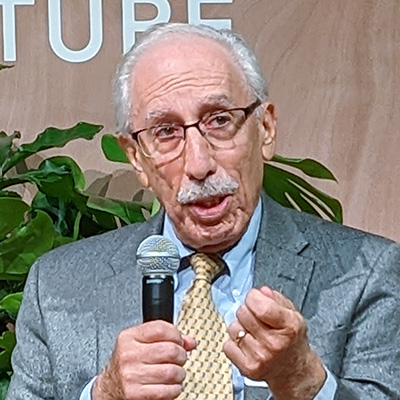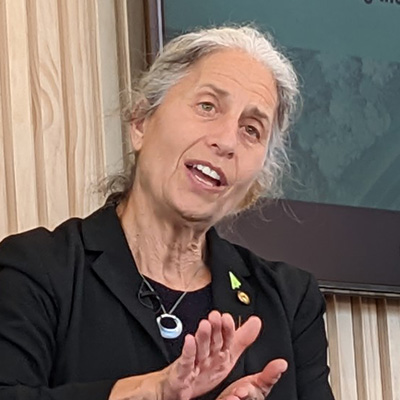New Jersey’s Board of Public Utilities (BPU) on Wednesday approved a $16.15 million allocation of funds from the Regional Greenhouse Gas Initiative to create the state’s first program designed to promote the installation of fast chargers for medium- and heavy-duty (MHD) electric vehicles.
The program, which includes an emphasis on smaller owner-operator trucking companies located in overburdened communities, will provide incentives of up to $225,000 for the purchase and installation of up to six direct current fast chargers (DCFCs).
With a two-pronged focus, the program aims to stimulate the development of community charging stations — those in locations where they could serve several trucking companies — and private fleet chargers, to incentivize trucking companies to go electric.
Saying that the state until now had no MHD incentive programs, the order creating the program said it “could help remove a key electrification obstacle for businesses” in environmental justice areas.
“A significant portion of MHD vehicles are independently owned and operated, and since investment in charging infrastructure is often cost prohibitive, there is a need to provide publicly accessible MHD charging for those vehicles near their base of operations and along their travel routes,” said the order, which the board approved unanimously.
Growing EV Fleets
The initiative comes as the BPU seeks to reduce transportation emissions, which account for 42% of the state’s emissions, with a particular focus on the trucking sector’s large contribution.
The state’s multipronged effort includes a June 2021 straw proposal to design a program to promote the development of charging sites for MHD electric trucks and ensuring they are distributed across the state in line with the needs of trucks, buses and other users. No final program has yet been released, and the design process is ongoing.
Other initiatives to get more EV trucks on the road include the state Department of Environmental Protection’s adoption in December of EV truck sales targets, and the New Jersey Economic Development Authority’s (EDA) two-year-old NJ Zero-Emission Incentive Program (NJZIP). The program, which the EDA said in July had funded the purchase of more than 150 light- and medium-duty trucks, awards vouchers to help buy an electric truck.
Pamela Frank — CEO of ChargEVC-NJ, an advocacy group that champions electric vehicle policies — said the state “certainly benefits from electrification of the MHD segment, and the linkage with this program and EDA’s ZIP program makes good sense.” Frank has in the past expressed concern that the state is not moving fast enough to promote heavy-duty electric vehicles.
“We need an all-hands-on-deck approach to tackle premium costs for these vehicles, which are declining, especially with respect to the lighter delivery trucks; and the costs associated with responsible grid integration,” she said.
Under the program announced Wednesday, the “BPU will develop new or enhance existing programming enabling low- and moderate-income households, particularly those in environmental justice communities, to participate in and benefit from the state of New Jersey’s efforts to improve access to clean transportation.”
The program will fund up to 100% of the purchase and installation costs of DCFC chargers with a capacity of 150 kWh or greater for community charging stations, to a maximum of $225,000 with no more than six chargers per location. To be eligible, the recipient must be located in or operating in an overburdened community.
New Jersey defines overburdened communities as any census block in which at least 35% of the households qualify as low-income; at least 40% of residents are minorities; or at least 40% of households have limited English proficiency. They account for about 4.7 million people, or slightly more than half the population of the state.
“The goal of the community charging track of this program would be to identify areas with a significant presence of, or interest in growing the operation of, electric MHD vehicles,” the order said. “The optimal locations for community chargers are those that are accessible by several local businesses that have or are interested in acquiring MHD EVs, such as warehouses or depots, with preference given to those that can demonstrate close proximity to businesses that currently own or operate MHD EVs.”
Initiatives under the private fleet charging sector would be eligible for incentives to cover 75% of the purchase and installation of DCFCs to a maximum of $175,000 and a cap of six chargers per location. The chargers in that case would not be required to be accessible to the public. Incentives in the fleet program will only be available to private fleets that have been awarded funding under the state’s NJZIP program and are either in an overburdened community targeted in the first phase of the program or have received an incentive that has been enhanced because of its location in an environmental justice area.
“The optimal locations for community chargers are those that are accessible by several local businesses that have or are interested in acquiring MHD EVs, such as warehouses or depots,” the order says, adding that there would be “preference given to those that can demonstrate close proximity to businesses that currently own or operate MHD EVs.”
Trucker Reluctance
New Jersey truckers have been slow to embrace EVs, however. Like those around the nation, they cite the lack of heavy-duty charging sites as a key obstacle to greater use of electric trucks. Other barriers cited by truckers in the past include the limited number of truck models available, the short range of existing electric trucks — which for larger trucks is about up to 250 miles — and the high cost of the vehicles.
The EDA, in line with the New Jersey Energy Master Plan, is seeking to transition 75% of the state’s medium-duty trucks and half of its heavy-duty trucks to EVs by 2050.
The NJZIP program, which is now in its third year, initially awarded purchase vouchers only for the purchase of light and medium trucks located or to be used in Newark or Camden, both of which are overburdened communities, or within 10 miles of the two cities. Newark is also next to the Port of New York and New Jersey, into which thousands of trucks drive each day.
The program was later expanded to include New Brunswick, in Central New Jersey, and to include communities in and around the Jersey Shore. The EDA allocated funds of $24.25 million to award vouchers of between $25,000 and $100,000 for the purchase of trucks of size Class 2B through Class 6. But the EDA in July expanded the program, adding $46.6 million in funds and for the first time awarding incentives of up Class 7 and Class 8, the largest in use, and a maximum incentive of $175,000. (See NJ Adds $46.6 Million to Electric Truck Incentives.)





